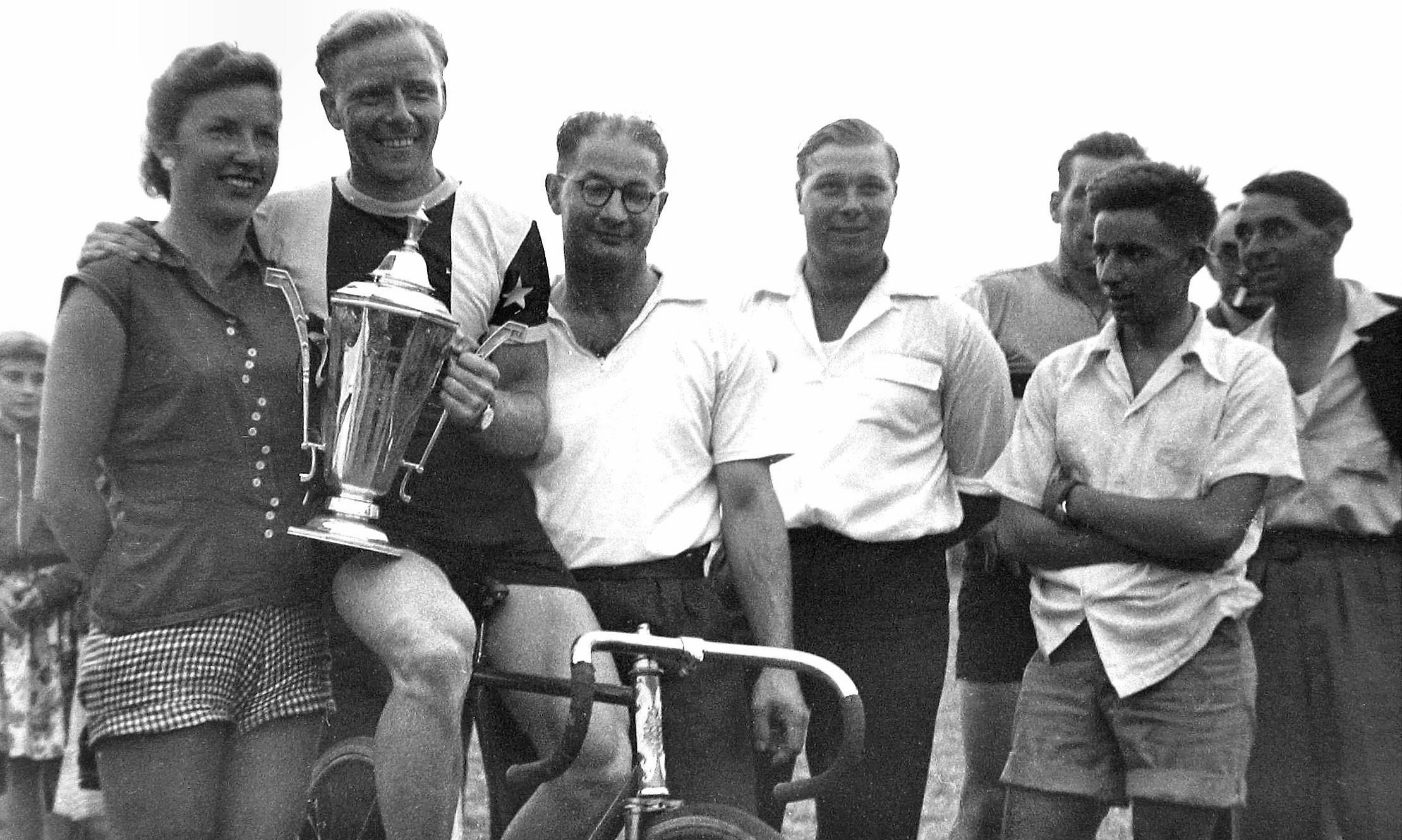Gears and racing in the 50's
Posted: Friday 21st August 2020
I rode a road race (or two) using the Campagnolo Paris/Roubaix professional single lever gear, in 1955.
The main problem was (as with Osgear) you need to feed the chain straight in line to the rear cogs. I ground off the tops of the teeth to a slight curve. Also, it was difficult to define which gear you selected. I had 14 – 24 and 47 -50 with enough fork end length to get these extreme gears, with the Simplex front changer set very loose and slightly bent outwards. I could change up the front with the inside of my leg while releasing the wheel. The gear change wasn’t too slow. Glad you noticed that little cam to push the wheel forward as you lock up, otherwise the chain would be too tight.
I used Constrictor tubulars and road raced in the pouring rain on my Constrictor pre-war “first choice” laminated maple rims using normal brake blocks with no bad effects. The rims survived OK and the brakes worked in the wet. They were made by Honore Fossier in Paris, with 4 laminations. I used and sold all this old kit between 1954 and 1966.
Harden hubs, clear those golden memories – they weren’t that good. The cup and cone type were poor. I had one with integral bearings where the journals on the axle were too far apart, resulting in the hub floating sideways and wearing the shell. I also had (1952) the freewheel hub which dragged the chain. The main problem for British hub makers was changing from the 1.5 inch chain line, as they were making them for 4.5 inch rear ends. The gear side spokes were nearly vertical.
My Cyclo Benelux with handlebar controls would allow simultaneous front and rear gear changes off the saddle. Impossible with the Campagnolo, I think.
I was reading John Spooner’s piece about Brooks saddles. We used to do similar stuff. Also Brooks would reblock saddles free of charge. Reblock to them meant remoulding the saddle, sometimes making it longer, nothing to do with bending the frame. I had a very rare direct account with Brooks, and actually supplied Joe Whisker with some B17’s because he could not get them anywhere else. I bought the Colnago from him end of 1972, which Mrs B used till the end of her career. She had to adopt a road position for time trialling because of lacking her left collar bone.
I remember Ron Kitching bringing in the Cinellis, some the colour of your green one and the original colour of the best model with the internal sloping fork crown, which was a stone colour. Later of course that became orange. I was Ron’s major customer in the south in the early 60’s. I always got the 8 ounce Scheeren rims packed in the middle of a crate of 25 pairs of heavier rims. I always ordered quantity lots with extra discount.
I seem to remember Clive Parker finished the Pro World championships in the early 50’s about 20 minutes down. We all though this was an incredible performance as one of our pros actually finished.
Wedgelock cranks. I think they were made from redundant Dayton stock, originally hexagon, but rebroached to square. The problem was the force on the square split the cranks. When I asked the maker about this I had this wonderful reply: “Only a brutal and insensitive hand etc.” This was later frequently used to explain failures in anything, one of my favourite catch phrases.
BSA: Those hubs were cheap rubbish on cheap sports bikes. In 1950 I had a BSA equipped with solid centre hubs with a medium size alloy flange which were equal to anything then. Sorry no pics, but the bike was a BSA Gold Column, genuine hand built, solid top eyes, butted 531, BSA own brazed on centre pull brakes, pedals with alloy side plates, B37, alloy 46T 5-pin chain ring, with Dunlop alloy HP’s and single fixed weighed 21 pounds.
Campagnolo: I must mention the Sport, important single roller parallelogram version, with the tension spring in the top arm, I got some from “Johnny” Bowles. Campagnolo had steel arms with bronze bushes, and we used to tap the rivets out and replace the top casting with the one with the internal tension spring. I think we had to take off the stop on the rear fork end, but it was a major improvement while supplies lasted. Most Campagnolo ends had a hole to anchor the spring.
Posted: Friday 21st August 2020
Upcoming Events
Whether you are looking for a gentle social meet up, or a 100-mile ride browse the community’s upcoming events and plan your next weekend outing.
